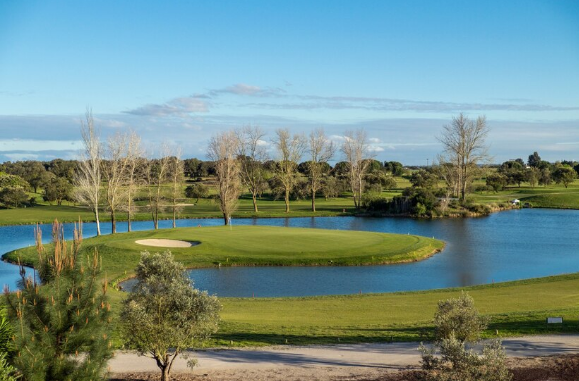How Old is St Andrews Golf Course? A Comprehensive Guide

Introduction to St Andrews Golf Course
As a passionate golfer and avid historian, I've always been fascinated by the rich heritage of the game we love. And when it comes to the history of golf, there's no place more iconic than the town of St Andrews, Scotland. Known as the "Home of Golf," St Andrews is where the sport's origins can be traced back centuries, and where the game has continued to evolve and thrive over the ages.
In this article, we'll delve into the captivating history of St Andrews Golf Course, exploring its origins, key milestones, and the legacy it has left on the game of golf. From the early days of shepherds and students hitting balls on the links to the modern-day tournaments that draw the world's top players, the story of St Andrews is one that truly captures the enduring spirit of the sport.
The Origins of Golf at St Andrews
The origins of golf at St Andrews can be traced back to the 15th century, when the town's residents began playing a primitive version of the game on the sprawling coastal links. The earliest known reference to golf being played at St Andrews dates back to 1552, when the town council passed an act prohibiting the game on Sundays, as it was interfering with the practice of archery.
Over the following centuries, the game continued to grow in popularity at St Andrews, with the town's students and gentry establishing the first organized golf clubs and courses. In 1754, the Society of St Andrews Golfers was formed, which would later become the Royal and Ancient Golf Club of St Andrews, the governing body of the sport.
Key Historical Milestones of St Andrews Golf Course
The history of St Andrews Golf Course is marked by several key milestones that have shaped the game of golf as we know it today. Here are some of the most significant events:
1764: The 18-hole golf course at St Andrews is established, setting the standard for golf course design that would be adopted by courses around the world.
1894: The Open Championship, one of golf's major tournaments, is held at St Andrews for the first time, cementing the course's status as the spiritual home of the sport.
1910: The Old Course at St Andrews undergoes a major renovation, with the legendary "Daw's Tee" being added to the 1st hole, creating one of the most iconic and challenging starting holes in golf.
1960: The R&A (Royal and Ancient Golf Club of St Andrews) becomes the governing body for golf outside of the United States and Mexico, further solidifying St Andrews' position as the global center of the sport.
2005: The Old Course at St Andrews hosts the 134th Open Championship, marking the 29th time the prestigious tournament has been held at the historic links.
The Old Course: A Detailed History
At the heart of St Andrews Golf Course is the iconic Old Course, widely regarded as the oldest golf course in the world. The origins of the Old Course can be traced back to the 15th century, when the town's residents began playing a primitive version of the game on the sprawling coastal links.
Over the centuries, the Old Course has undergone numerous changes and renovations, but its fundamental layout and character have remained largely intact. One of the most significant milestones in the course's history was the establishment of the 18-hole format in 1764, which has since become the standard for golf courses around the world.
The Old Course is renowned for its unique features, such as the "Road Hole" (the 17th hole), which is considered one of the most challenging and iconic holes in golf. The course's undulating fairways, deep bunkers, and treacherous greens have tested the skills of the world's greatest golfers for generations.
Famous Tournaments and Events at St Andrews
St Andrews Golf Course has played host to some of the most prestigious and historic golf tournaments in the world. The most notable of these is the Open Championship, one of the four major championships in professional golf. The Open has been held at St Andrews a total of 29 times, more than any other course.
Other major events that have taken place at St Andrews include the Walker Cup, a biennial amateur team golf competition between the United States and Great Britain and Ireland, and the Alfred Dunhill Links Championship, a European Tour event that features a unique pro-am format.
In addition to these high-profile tournaments, St Andrews has also been the site of numerous other significant golf events, such as the St Andrews Links Trophy, a prestigious amateur tournament, and the annual St Andrews Links Trophy, which draws top amateur golfers from around the world.
Notable Figures in the History of St Andrews Golf Course
Over the centuries, St Andrews Golf Course has been home to countless legendary figures in the world of golf. From the early pioneers of the game to the modern-day superstars, the list of notable players and personalities associated with St Andrews is truly impressive.
Some of the most famous names in the history of St Andrews include:
Old Tom Morris: Considered one of the founding fathers of modern golf, Morris was the greenkeeper and professional at St Andrews in the 19th century, and won four Open Championships at the course.
Jack Nicklaus: The "Golden Bear" is widely regarded as one of the greatest golfers of all time, and he has won a record three Open Championships at St Andrews.
Tiger Woods: The iconic American golfer has won two Open Championships at St Andrews, cementing his legacy as one of the all-time greats of the game.
Annika Sorenstam: The legendary Swedish golfer made history in 2003 when she became the first woman to compete in a men's major championship at the Open Championship held at St Andrews.
These are just a few of the countless individuals who have left an indelible mark on the history of St Andrews Golf Course.
Architectural Evolution of St Andrews Golf Course
The architectural evolution of St Andrews Golf Course is a fascinating story in its own right. Over the centuries, the course has undergone numerous changes and renovations, with each era leaving its own unique imprint on the layout and design.
In the early days, the course was a relatively simple affair, with the natural contours of the land shaping the fairways and greens. As the game of golf grew in popularity, however, the demand for more challenging and sophisticated courses led to a series of improvements and enhancements.
One of the most significant architectural changes to the Old Course came in 1910, when the legendary "Daw's Tee" was added to the 1st hole. This new tee box, which was named after the greenkeeper who oversaw the project, created one of the most iconic and challenging starting holes in golf.
Other notable architectural changes to St Andrews over the years include the addition of new bunkers, the reshaping of fairways and greens, and the construction of new practice facilities and clubhouses. Despite these changes, however, the fundamental character and spirit of the Old Course has remained largely intact, preserving its status as one of the most revered and historic golf courses in the world.
St Andrews Golf Course in Modern Times
In the modern era, St Andrews Golf Course continues to be a hub of activity and innovation in the world of golf. The Old Course remains the centerpiece of the town's golfing offerings, but the St Andrews Links Trust, which manages the course, has also developed a number of other world-class facilities to cater to the growing number of visitors.
Today, St Andrews is home to a total of seven golf courses, including the Old Course, the New Course, the Jubilee Course, the Eden Course, the Strathtyrum Course, the Balgove Course, and the Castle Course. Each of these courses offers a unique golfing experience, catering to players of all skill levels and preferences.
In addition to the courses, St Andrews has also become a hub for golf research and development, with the University of St Andrews and the R&A (Royal and Ancient Golf Club of St Andrews) leading the way in areas such as course design, equipment technology, and player performance analysis.
As the global center of the sport, St Andrews continues to attract golfers from around the world, who come to experience the rich history and unparalleled playing conditions of this legendary golf destination.
Conclusion: The Legacy of St Andrews Golf Course
As we've explored in this article, the history of St Andrews Golf Course is a rich and captivating tapestry that spans centuries. From its humble beginnings as a place for shepherds and students to play a primitive version of the game, to its current status as the global center of golf, St Andrews has left an indelible mark on the sport.
The Old Course, in particular, stands as a testament to the enduring spirit of the game, with its unique features and challenges continuing to test the skills of the world's greatest golfers. And the town's role as the home of the Royal and Ancient Golf Club, the governing body of the sport, further solidifies its position as the spiritual home of golf.
As we look to the future, it's clear that St Andrews will continue to play a vital role in the evolution of the game. Whether through the hosting of major tournaments, the advancement of golf technology and research, or the ongoing preservation of the town's rich golfing heritage, this legendary course will undoubtedly remain a source of inspiration and wonder for golfers around the world.
If you're a passionate golfer or a lover of history, I encourage you to plan a visit to St Andrews, Scotland. Walking the fairways of the Old Course and immersing yourself in the rich legacy of the game is an experience that will stay with you for a lifetime. Whether you're looking to play a round, explore the town's historic sites, or simply soak in the breathtaking coastal views, St Andrews is a destination that should be on every golfer's bucket list.
